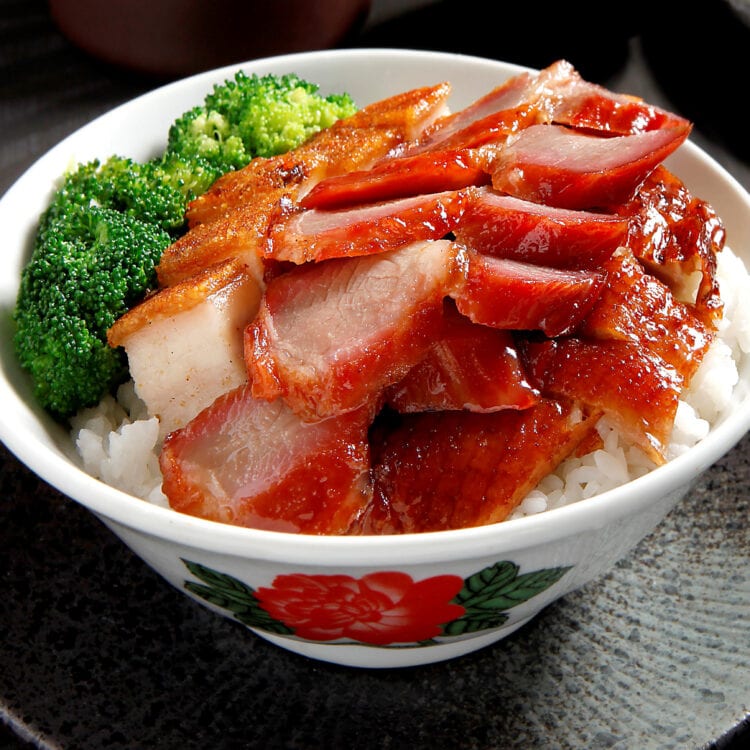Char Siu, also known as Chinese barbecued pork, is a delicious Cantonese specialty of roasted meat. With this recipe, you can make authentic homemade Char Siu that’s just as good as what you’d find in the best restaurants!
What is Char Siu Pork?
Char siu (叉烧) is a type of Cantonese roasted meat and is a classic in Chinese cuisine.
Char siu is its Cantonese name, but in Mandarin it’s called cha shao. To make char siu, pork is marinated in a sweet barbecue sauce and then roasted. On Reunion Island, it’s also known as sarcives.
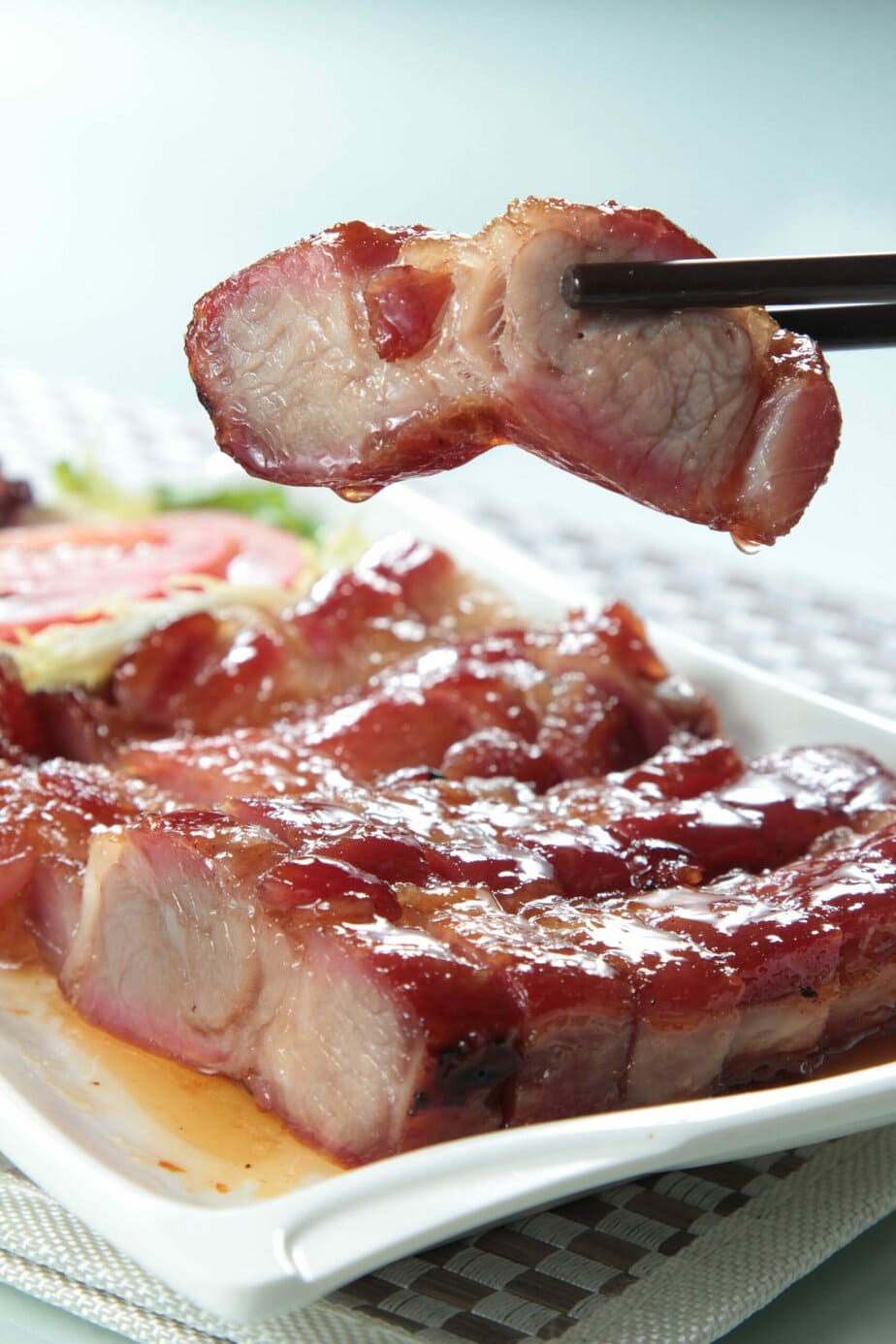
For many years, Char Siu enjoyed a golden age, delighting food lovers with its rich, flavorful dishes. However, in recent years, it has become harder and harder to find quality barbecued pork, whether in shops or restaurants.
These days, it seems like many places are cutting back on seasonings, which leads to dry, cold pork and other disappointments—much to the frustration of fans of this delicious dish.
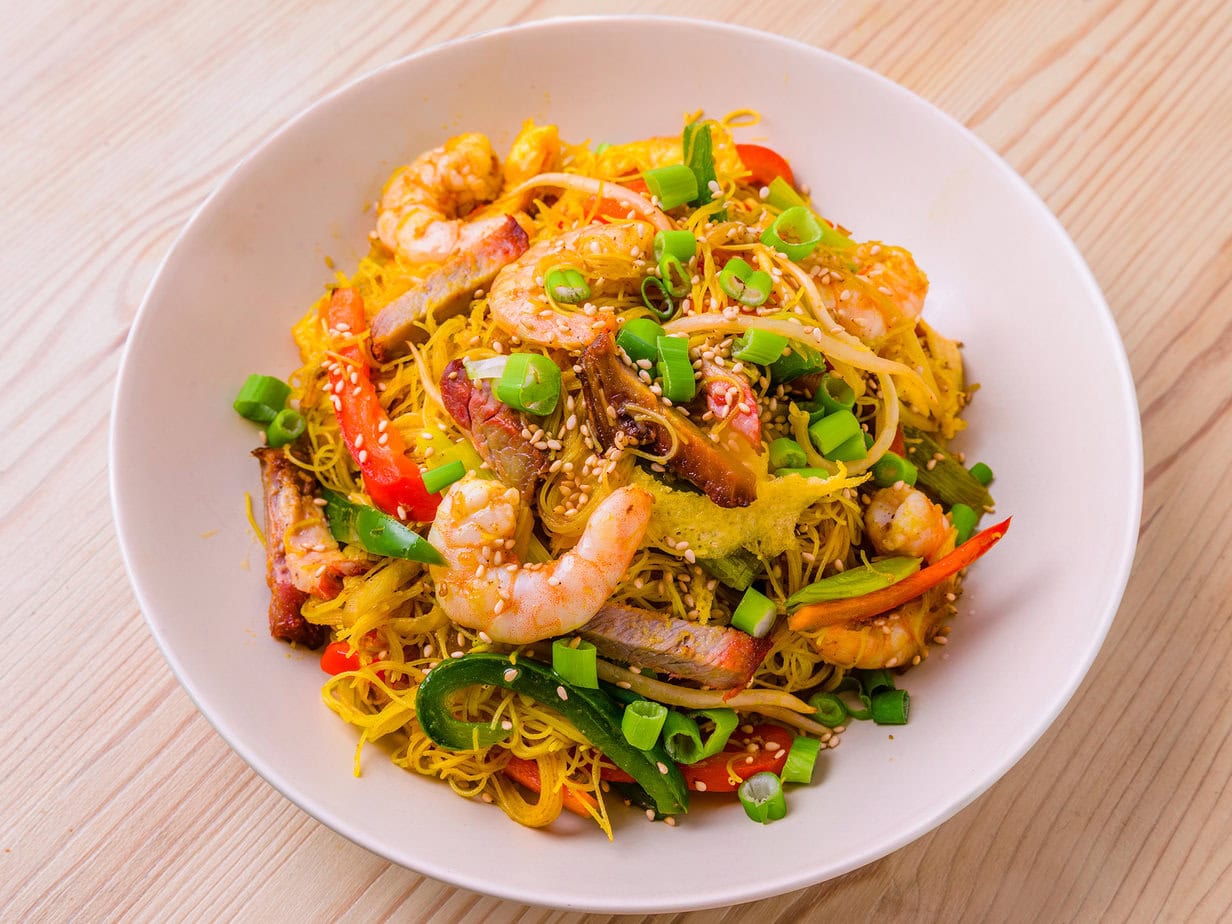
It’s important not to blame restaurant owners alone for this situation, as the current economic climate plays a big role in the push for profitability that’s often forced by circumstances.
Rising ingredient costs and competitive pressure are pushing businesses to find ways to cut expenses without completely sacrificing quality.
Still, our taste buds, longing for the authentic flavors of barbecued pork, are calling for a return to tradition—a dish that honors the culinary techniques and heritage that made Char Siu famous.
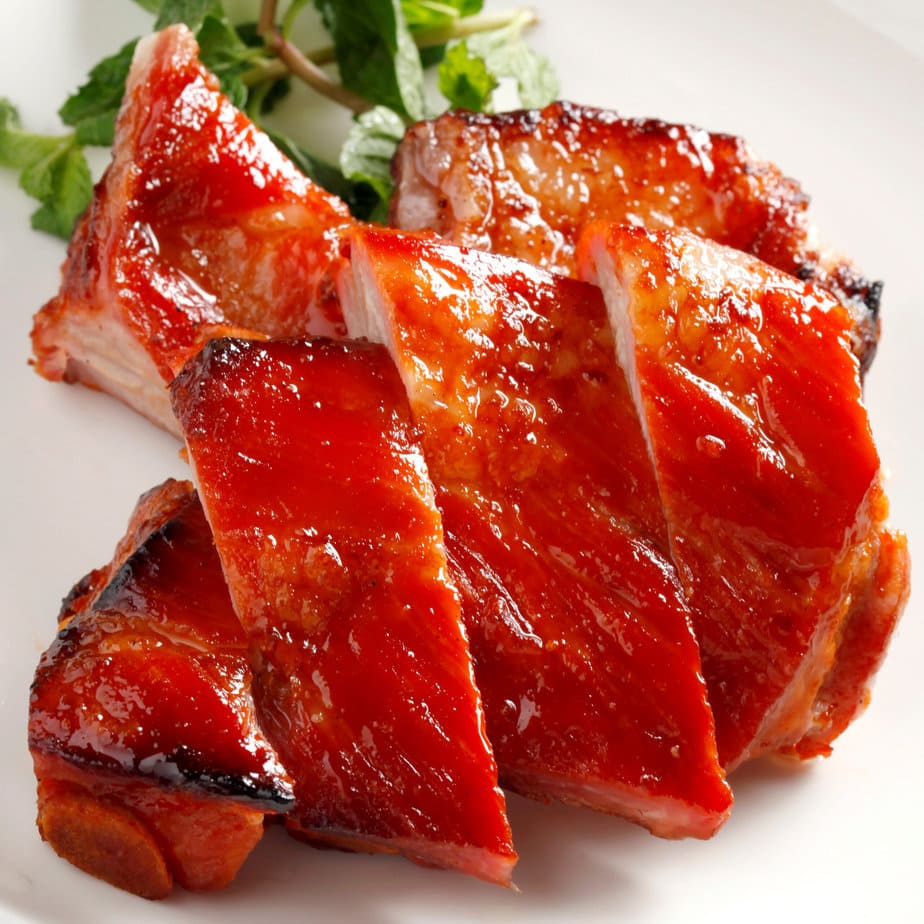
A good char siu recipe has real depth of flavor: a delicious sweet and salty contrast with a hint of spice that perfectly complements the pork, so it can be served with nothing more than a bowl of steamed rice and some blanched choy sum.
As you can tell, it’s AMAZING.
How do you make Char Siu Pork?
Actually, it’s a really simple process. The ingredients aren’t hard to find. Honestly, apart from Shaoxing wine and hoisin sauce (which you can make at home), you should be able to get everything you need at your local supermarket.
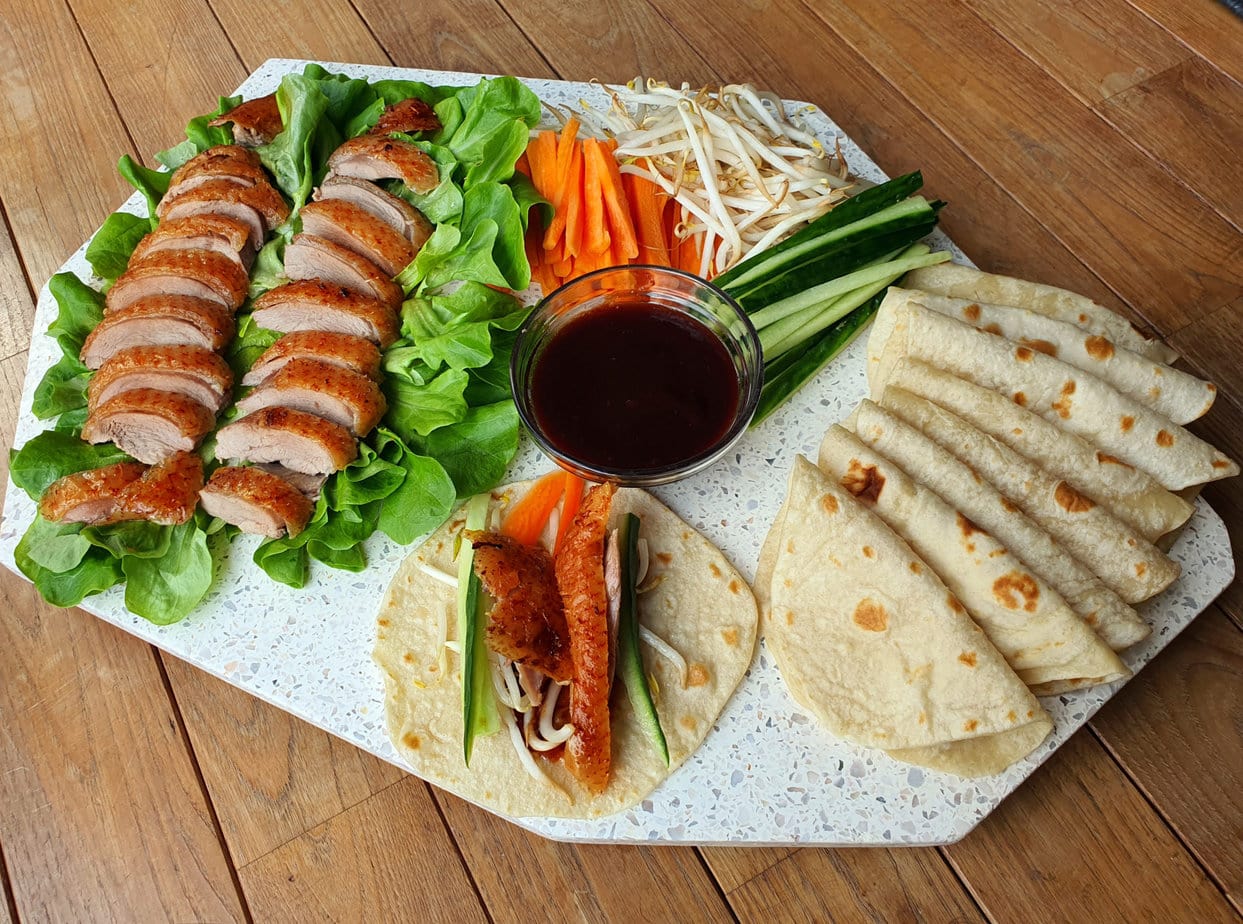
Basically, all you do is mix the spices for the sauce, marinate the meat, and then the next day: roast and enjoy. That’s it. Much easier than my homemade Peking duck, for sure.
Key Ingredients for Chinese Barbecued Pork (Char Siu)

Light soy sauce: This is the regular soy sauce you’ll find in most supermarkets.
Hoisin sauce: This is the Chinese barbecue sauce you can make yourself by clicking here. You’ll often see it served with Peking duck, and its flavor is just fantastic.
Sesame oil: This oil has a wonderful aroma and a strong flavor—so use it sparingly!
Shaoxing wine: This Chinese cooking wine is essential for many recipes on the site. Click to see how to substitute it, but honestly, it won’t be quite the same.
Chinese five spice: This classic spice blend gives barbecued pork its signature flavor.
White pepper: Adds a welcome touch of heat.
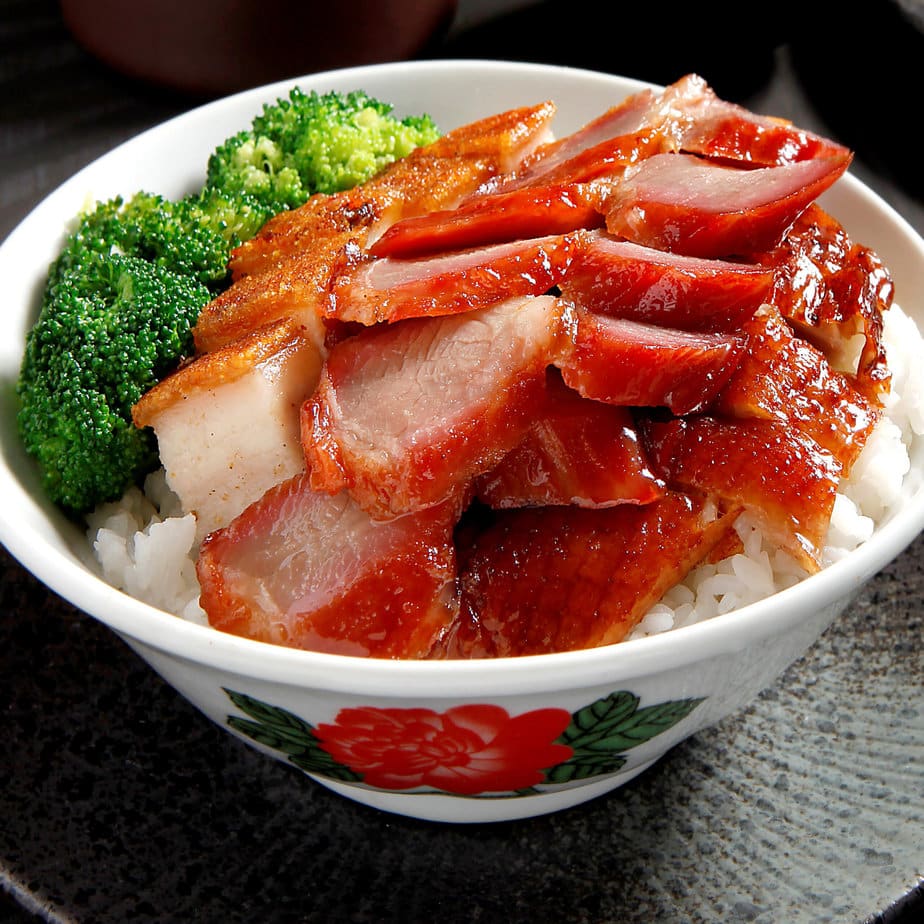
Ingredients
- 1.5 kg boneless pork shoulder choose a piece with a fat cap
- 15 ml hot water
- 35 ml honey
Marinade
- 50 g sugar
- 2 teaspoons salt
- 2 teaspoons Chinese five-spice powder
- 1 pinch white pepper
- 0.5 teaspoon sesame oil
- 15 ml Shaoxing wine
- 15 ml light soy sauce
- 25 g hoisin sauce
- 2 teaspoons molasses Can be substituted with honey
- 5 cloves minced garlic
- 0.15 teaspoon red food coloring Just the tip of a spoon
Instructions
- Cut the pork into long strips or into pieces about 6 to 8 cm thick. Do not remove the fat, as it adds flavor. (Fat is life!)1.5 kg boneless pork shoulder
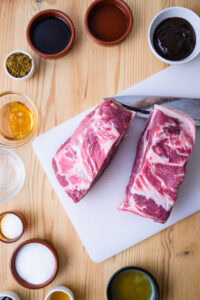
- Mix the marinade ingredients together.50 g sugar, 2 teaspoons salt, 2 teaspoons Chinese five-spice powder, 1 pinch white pepper, 0.5 teaspoon sesame oil, 15 ml Shaoxing wine, 15 ml light soy sauce, 25 g hoisin sauce, 2 teaspoons molasses, 5 cloves minced garlic, 0.15 teaspoon red food coloring
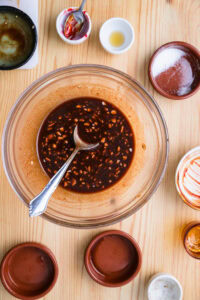
- Set aside about 2 tablespoons of marinade for later. Rub the pork with the remaining marinade in a mixing bowl or baking dish. Cover and marinate in the fridge overnight.
- Preheat your oven to 250°C (475°F).
- Line a baking tray with aluminum foil and place a metal rack on top. Using the rack keeps the pork off the tray and helps it roast more evenly.
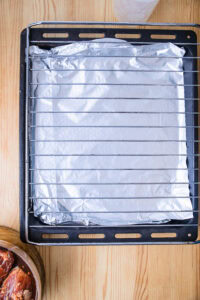
- Place the pork on the rack, leaving as much space as possible between pieces. Pour a little water into the tray under the rack to prevent drippings from burning or smoking. During testing, the smoke left a very acrid aftertaste (I wondered if it might add a smoky note, but it didn’t).
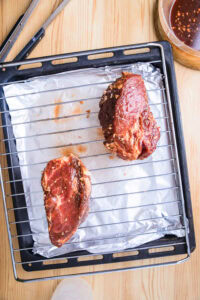
- Transfer the pork to the preheated oven (no convection/fan). Roast for 25 minutes, keeping the oven at 250°C for the first 10 minutes, then reduce the temperature to 190°C (375°F).
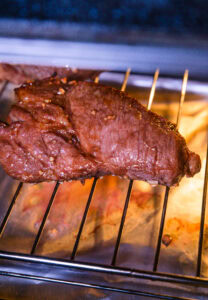
- After 25 minutes, flip the pork. If the bottom of the tray is dry, add more water. Rotate the rack 180 degrees to ensure even roasting.
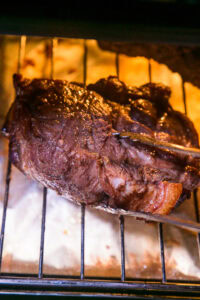
- Roast for another 15 minutes. During cooking, check the char siu often (every 10 minutes) and lower the oven temperature if it looks like it’s burning.
- Meanwhile, mix the reserved marinade with the honey and hot water. This will be your glazing sauce.15 ml hot water, 35 ml honey
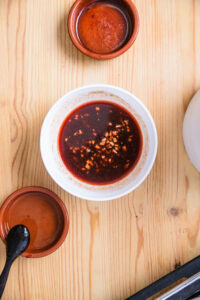
- After 40 minutes of total roasting time, glaze the pork, turn it over, and glaze the other side as well. Roast for another 10 minutes.
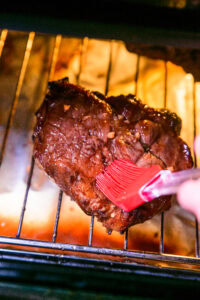
- After 50 minutes, if the pork isn’t caramelized enough, increase the temperature for a few minutes. Watch carefully to prevent the sweet sauce from burning.
- Remove from the oven and glaze with any remaining reserved char siu sauce.
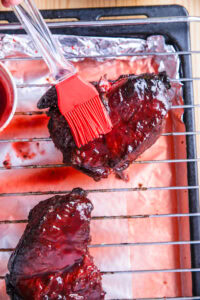
- Let the meat rest for 10 minutes before slicing!
Video
Notes
Oven temperatures can vary greatly, so check your char siu every 10 minutes, adjusting the temperature as needed.
Nutrition
Culinary sources used: The Woks of Life. After testing, the spice quantities were adjusted, but the method remains the same.
